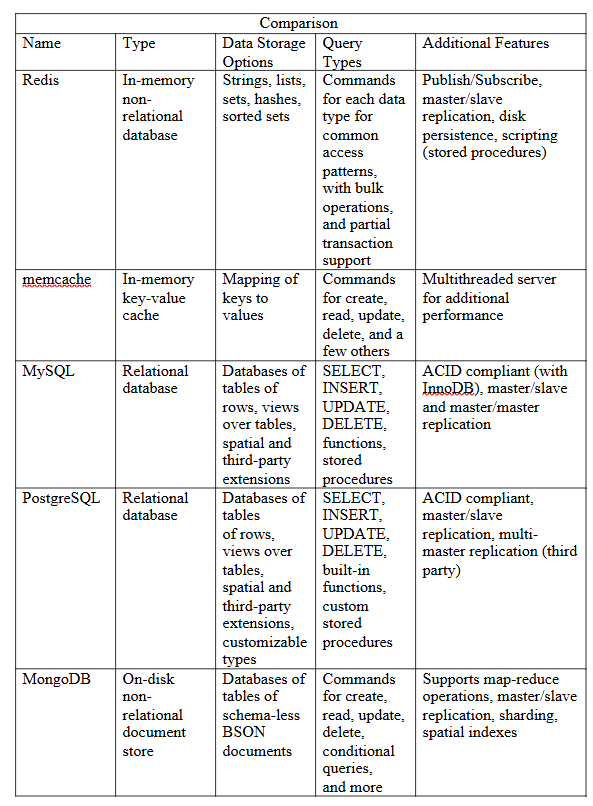
What is Redis?
Redis is an open-source, in-memory data structure store that may be used as a database, cache, or message broker. It supports several data structures including strings, hashes, lists, sets, sorted sets, bitmaps, hyper loglogs, and geospatial indexes. Redis is characterized by its performance, simplicity, and versatility.
Key Features of Redis
Uses of Redis
How to Implement Redis
1. Installation
2. Basic Commands
3. Config
Modify the redis.conf configuration for parameters, such as Persistence: Persist to AOF by append only yes. Security: Add a password using the requirepass. Max Memory: Specify limitations with max memory and eviction strategies. Log: Configure levels and logfiles.
4. Client libraries Redis supports many client libraries in multiple languages such as Python (redis-py), Node.js (ioredis), Java (Jedis), and PHP (Predis or phpredis).
Redis in Laravel Framework
Redis is neatly supported in Laravel because Laravel supports Redis out of the box.
Install Redis on your system and ensure that Redis is running.
2. Installation of PHP Redis Extension
You can install the PHP Redis extension by using the following command: Linux/macOS: pecl install redis Windows: Copy the Redis DLL to the PHP extensions folder and uncomment it in php.ini.
3. Laravel Configuration
Add Redis to the config/database.php file:
'redis' => [
'client' => env('REDIS_CLIENT', 'phpredis'),
'default' => [
'host' => env('REDIS_HOST', '127.0.0.1'),
'password' => env('REDIS_PASSWORD', null),
'port' => env('REDIS_PORT', 6379),
'database' => env('REDIS_DB', 0),
],
'cache' => [
'host' => env('REDIS_HOST', '127.0.0.1'),
'password' => env('REDIS_PASSWORD', null),
'port' => env('REDIS_PORT', 6379),
'database' => env('REDIS_CACHE_DB', 1),
],
],
Update the .env file:
Usage in Laravel
Caching:
Best Practices with Redis
Secure Redis:

Tools and Libraries
Connect with Redis client API libraries:
Use the Redis client libraries to connect to Redis servers from your own code. Following client libraries for six main languages:
Community-supported clients
The table below shows the recommended third-party client libraries for languages that Redis does not document directly:
redis-py guide (Python)
Connect your Python application to a Redis database
redis-py is the Python client for Redis. The sections below explain how to install redis-py and connect your application to a Redis database.
redis-py requires a running Redis or Redis Stack server. See Getting started for Redis installation instructions. You can also access Redis with an object-mapping client interface.
Install
To install redis-py, enter:
pip install redis
For faster performance, install Redis with hiredis support. This provides a compiled response parser, and for most cases requires zero code changes. By default, if hiredis >= 1.0 is available, redis-py attempts to use it for response parsing.
pip install redis[hiredis]
Connect and test
Connect to localhost on port 6379, set a value in Redis, and retrieve it. All responses are returned as bytes in Python. To receive decoded strings, set decode_responses=True. For more connection options, see these examples.
r = redis.Redis(host='localhost', port=6379, decode_responses=True)
Store and retrieve a simple string.
r.set('foo', 'bar')
# True
r.get('foo')
# bar
Store and retrieve a dict.
r.hset('user-session:123', mapping={
'name': 'John',
"surname": 'Smith',
"company": 'Redis',
"age": 29
})
# True
r.hgetall('user-session:123')
# {'surname': 'Smith', 'name': 'John', 'company': 'Redis', 'age': '29'}
Redis is a powerful and versatile tool for all kinds of use cases, from caching to real-time analytics. With its increasing feature set and community support, Redis remains a critical component of modern application architecture. Its flexibility and performance make it an essential technology for developers who want to build scalable, high-performance applications.
References:
https://dev.to/woovi/simple-cache-with-redis-5g3a
https://laravel.com/docs/11.x/redis
https://redis.io/docs/latest/develop/clients/
https://redis.io/ebook/part-1-getting-started/chapter-1-getting-to-kn…
